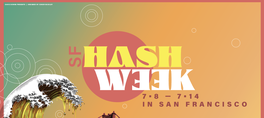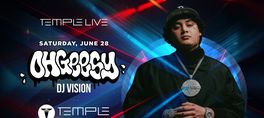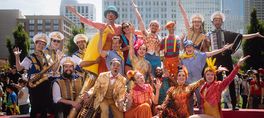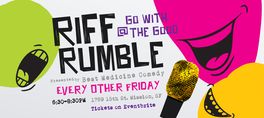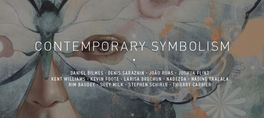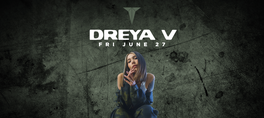SFPerformances and YBCA present
DORRANCE DANCE
Performing the Bay Area Premiere of
ETM: Double Down
Created by Michelle Dorrance and Nicholas Van Young
Original Tap Instrument Design by Nicholas Van Young
Choreography by Michelle Dorrance and Nicholas Van Young with
Ephrat “Bounce” Asherie and solo improvisation by the dancers
THURSDAY-SATURDAY, MAY 9-11, 2019 | 7:30PM
YBCA THEATER | $70/$55/$45
SATURDAY, MAY 11, 2:00PM | FAMILY MATINEE
YBCA THEATER | $15 Children/$25 Adults
Dorrance Dance returns to San Francisco bringing the Bay Area premiere of their signature, high energy piece ETM: Double Down, in which the performers use “tap instruments” created by Nicholas Van Young to not only dance, but also create live music.
Van Young grew up during the explosion of electronic dance music (EDM) and evolution of hiphop, a time when innovative ways of producing music were being explored. He started applying that technology (and techniques) to his dance, enabling him to create music with his feet.
“It started with the simple need to find a way to amplify tap dance without feedback, so I could dance with a live band,” says Young. “Many people have used contact microphones (Gregory Hines, Tap Dogs, etc.) so I knew that was a possibility, and it led me to experimenting with guitar pedals and effects. I started out looping hand and body percussion with live and affected tap dance. I knew contact mics could be doubled as drum triggers and I was already playing around with a masterful piece of software called Ableton: a live performance software, digital audio workstation. I got the idea to create small trigger boards to dance on — essentially wooden drum pads. In conjunction with my main dance board and effects, this added a whole new sound set for me to experiment with.”
The entire stage in ETM: Double Down acts as an electronic drum trigger, but for feet. As the dancers perform on different areas of the dance surface, the sound is recorded and manipulated through the electronic hardware to create music that the dancers can respond and improvise to.
“Tap dance was America's first street form and is deeply rooted in the foundations of Hip Hop and House dance,” emphasizes Michelle Dorrance. “These communities have long been connected on the streets and in clubs, but are less likely to be found on the concert stage. As we enter the world of electronic music, looping and sampling, these worlds become even closer and that connection ever more important.”
“To steal a quote from a tap dancer named Steve Zee,” Van Young says: ‘The history of tap dance is the history of America.’ And I think that’s a really simple, clear way to state that. And tap dance within the African-American community has continued to be a catalyst for social change. A lot of the early tap dancers were ground breakers in multiple ways for film, for music, and for civil rights.”
Photo by Matthew Murphy
show less
DORRANCE DANCE
Performing the Bay Area Premiere of
ETM: Double Down
Created by Michelle Dorrance and Nicholas Van Young
Original Tap Instrument Design by Nicholas Van Young
Choreography by Michelle Dorrance and Nicholas Van Young with
Ephrat “Bounce” Asherie and solo improvisation by the dancers
THURSDAY-SATURDAY, MAY 9-11, 2019 | 7:30PM
YBCA THEATER | $70/$55/$45
SATURDAY, MAY 11, 2:00PM | FAMILY MATINEE
YBCA THEATER | $15 Children/$25 Adults
Dorrance Dance returns to San Francisco bringing the Bay Area premiere of their signature, high energy piece ETM: Double Down, in which the performers use “tap instruments” created by Nicholas Van Young to not only dance, but also create live music.
Van Young grew up during the explosion of electronic dance music (EDM) and evolution of hiphop, a time when innovative ways of producing music were being explored. He started applying that technology (and techniques) to his dance, enabling him to create music with his feet.
“It started with the simple need to find a way to amplify tap dance without feedback, so I could dance with a live band,” says Young. “Many people have used contact microphones (Gregory Hines, Tap Dogs, etc.) so I knew that was a possibility, and it led me to experimenting with guitar pedals and effects. I started out looping hand and body percussion with live and affected tap dance. I knew contact mics could be doubled as drum triggers and I was already playing around with a masterful piece of software called Ableton: a live performance software, digital audio workstation. I got the idea to create small trigger boards to dance on — essentially wooden drum pads. In conjunction with my main dance board and effects, this added a whole new sound set for me to experiment with.”
The entire stage in ETM: Double Down acts as an electronic drum trigger, but for feet. As the dancers perform on different areas of the dance surface, the sound is recorded and manipulated through the electronic hardware to create music that the dancers can respond and improvise to.
“Tap dance was America's first street form and is deeply rooted in the foundations of Hip Hop and House dance,” emphasizes Michelle Dorrance. “These communities have long been connected on the streets and in clubs, but are less likely to be found on the concert stage. As we enter the world of electronic music, looping and sampling, these worlds become even closer and that connection ever more important.”
“To steal a quote from a tap dancer named Steve Zee,” Van Young says: ‘The history of tap dance is the history of America.’ And I think that’s a really simple, clear way to state that. And tap dance within the African-American community has continued to be a catalyst for social change. A lot of the early tap dancers were ground breakers in multiple ways for film, for music, and for civil rights.”
Photo by Matthew Murphy
SFPerformances and YBCA present
DORRANCE DANCE
Performing the Bay Area Premiere of
ETM: Double Down
Created by Michelle Dorrance and Nicholas Van Young
Original Tap Instrument Design by Nicholas Van Young
Choreography by Michelle Dorrance and Nicholas Van Young with
Ephrat “Bounce” Asherie and solo improvisation by the dancers
THURSDAY-SATURDAY, MAY 9-11, 2019 | 7:30PM
YBCA THEATER | $70/$55/$45
SATURDAY, MAY 11, 2:00PM | FAMILY MATINEE
YBCA THEATER | $15 Children/$25 Adults
Dorrance Dance returns to San Francisco bringing the Bay Area premiere of their signature, high energy piece ETM: Double Down, in which the performers use “tap instruments” created by Nicholas Van Young to not only dance, but also create live music.
Van Young grew up during the explosion of electronic dance music (EDM) and evolution of hiphop, a time when innovative ways of producing music were being explored. He started applying that technology (and techniques) to his dance, enabling him to create music with his feet.
“It started with the simple need to find a way to amplify tap dance without feedback, so I could dance with a live band,” says Young. “Many people have used contact microphones (Gregory Hines, Tap Dogs, etc.) so I knew that was a possibility, and it led me to experimenting with guitar pedals and effects. I started out looping hand and body percussion with live and affected tap dance. I knew contact mics could be doubled as drum triggers and I was already playing around with a masterful piece of software called Ableton: a live performance software, digital audio workstation. I got the idea to create small trigger boards to dance on — essentially wooden drum pads. In conjunction with my main dance board and effects, this added a whole new sound set for me to experiment with.”
The entire stage in ETM: Double Down acts as an electronic drum trigger, but for feet. As the dancers perform on different areas of the dance surface, the sound is recorded and manipulated through the electronic hardware to create music that the dancers can respond and improvise to.
“Tap dance was America's first street form and is deeply rooted in the foundations of Hip Hop and House dance,” emphasizes Michelle Dorrance. “These communities have long been connected on the streets and in clubs, but are less likely to be found on the concert stage. As we enter the world of electronic music, looping and sampling, these worlds become even closer and that connection ever more important.”
“To steal a quote from a tap dancer named Steve Zee,” Van Young says: ‘The history of tap dance is the history of America.’ And I think that’s a really simple, clear way to state that. And tap dance within the African-American community has continued to be a catalyst for social change. A lot of the early tap dancers were ground breakers in multiple ways for film, for music, and for civil rights.”
Photo by Matthew Murphy
read more
DORRANCE DANCE
Performing the Bay Area Premiere of
ETM: Double Down
Created by Michelle Dorrance and Nicholas Van Young
Original Tap Instrument Design by Nicholas Van Young
Choreography by Michelle Dorrance and Nicholas Van Young with
Ephrat “Bounce” Asherie and solo improvisation by the dancers
THURSDAY-SATURDAY, MAY 9-11, 2019 | 7:30PM
YBCA THEATER | $70/$55/$45
SATURDAY, MAY 11, 2:00PM | FAMILY MATINEE
YBCA THEATER | $15 Children/$25 Adults
Dorrance Dance returns to San Francisco bringing the Bay Area premiere of their signature, high energy piece ETM: Double Down, in which the performers use “tap instruments” created by Nicholas Van Young to not only dance, but also create live music.
Van Young grew up during the explosion of electronic dance music (EDM) and evolution of hiphop, a time when innovative ways of producing music were being explored. He started applying that technology (and techniques) to his dance, enabling him to create music with his feet.
“It started with the simple need to find a way to amplify tap dance without feedback, so I could dance with a live band,” says Young. “Many people have used contact microphones (Gregory Hines, Tap Dogs, etc.) so I knew that was a possibility, and it led me to experimenting with guitar pedals and effects. I started out looping hand and body percussion with live and affected tap dance. I knew contact mics could be doubled as drum triggers and I was already playing around with a masterful piece of software called Ableton: a live performance software, digital audio workstation. I got the idea to create small trigger boards to dance on — essentially wooden drum pads. In conjunction with my main dance board and effects, this added a whole new sound set for me to experiment with.”
The entire stage in ETM: Double Down acts as an electronic drum trigger, but for feet. As the dancers perform on different areas of the dance surface, the sound is recorded and manipulated through the electronic hardware to create music that the dancers can respond and improvise to.
“Tap dance was America's first street form and is deeply rooted in the foundations of Hip Hop and House dance,” emphasizes Michelle Dorrance. “These communities have long been connected on the streets and in clubs, but are less likely to be found on the concert stage. As we enter the world of electronic music, looping and sampling, these worlds become even closer and that connection ever more important.”
“To steal a quote from a tap dancer named Steve Zee,” Van Young says: ‘The history of tap dance is the history of America.’ And I think that’s a really simple, clear way to state that. And tap dance within the African-American community has continued to be a catalyst for social change. A lot of the early tap dancers were ground breakers in multiple ways for film, for music, and for civil rights.”
Photo by Matthew Murphy
show less
Date/Times:
Yerba Buena Center for the Arts (YBCA)
6 Upcoming Events
701 Mission Street, San Francisco, CA 94103
The Best Events
Every Week in Your Inbox
From Our Sponsors
UPCOMING EVENTS
Great suggestion! We'll be in touch.
Event reviewed successfully.

